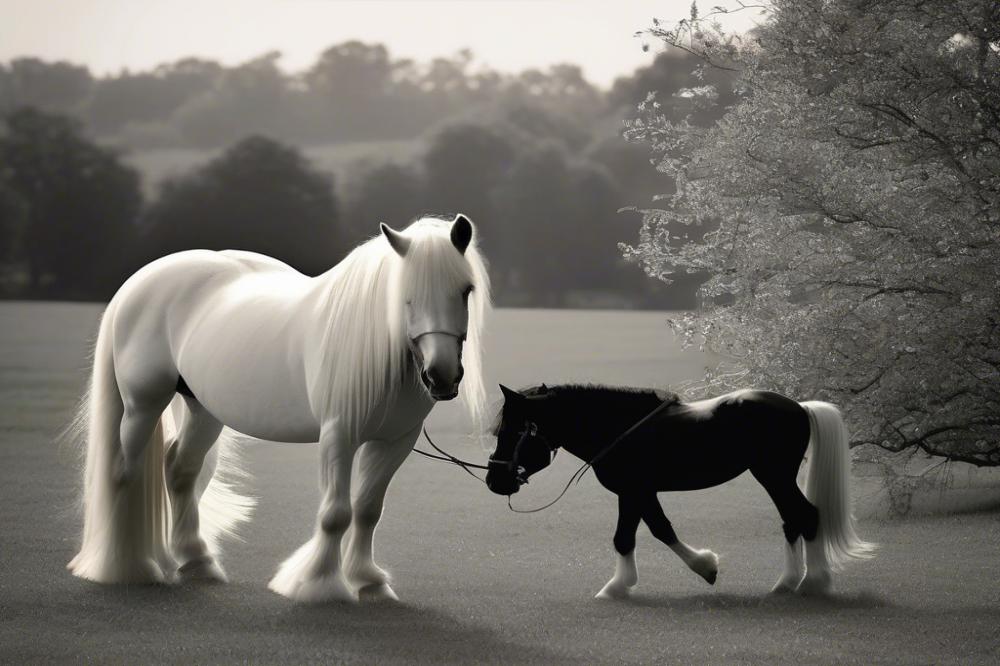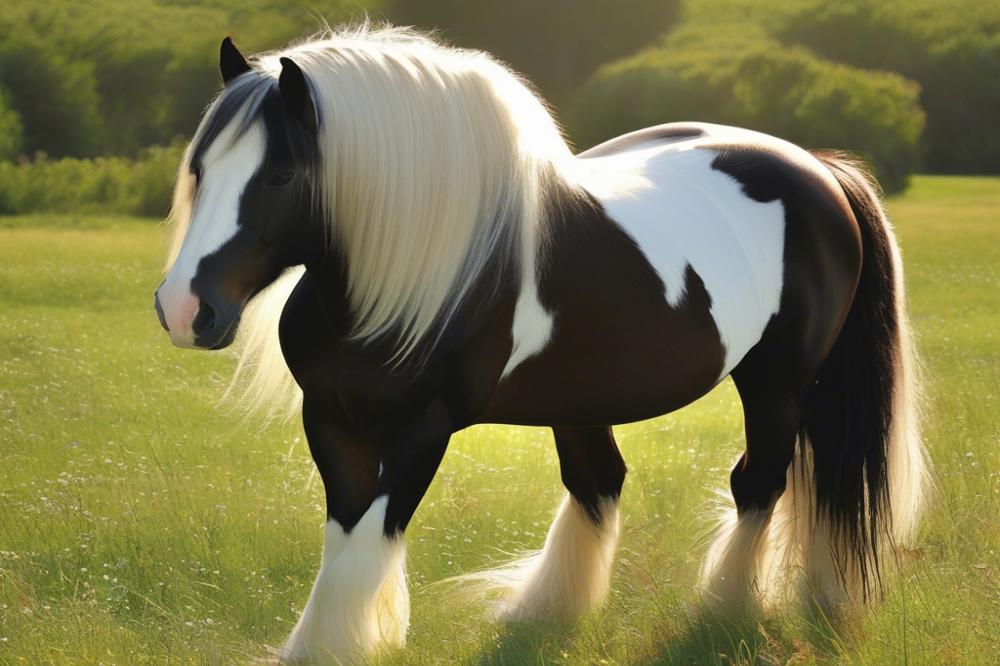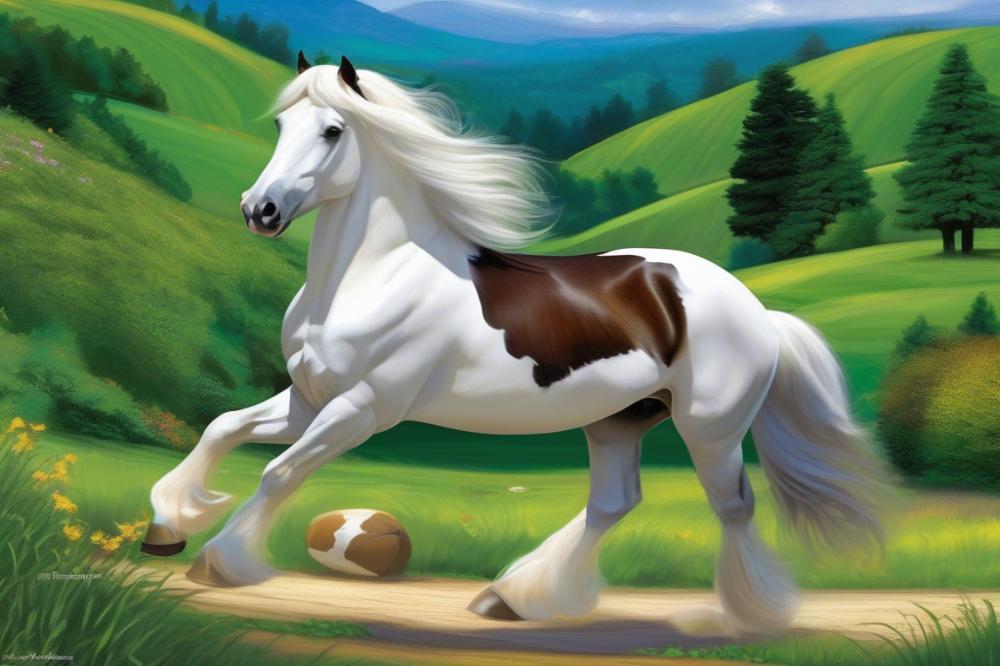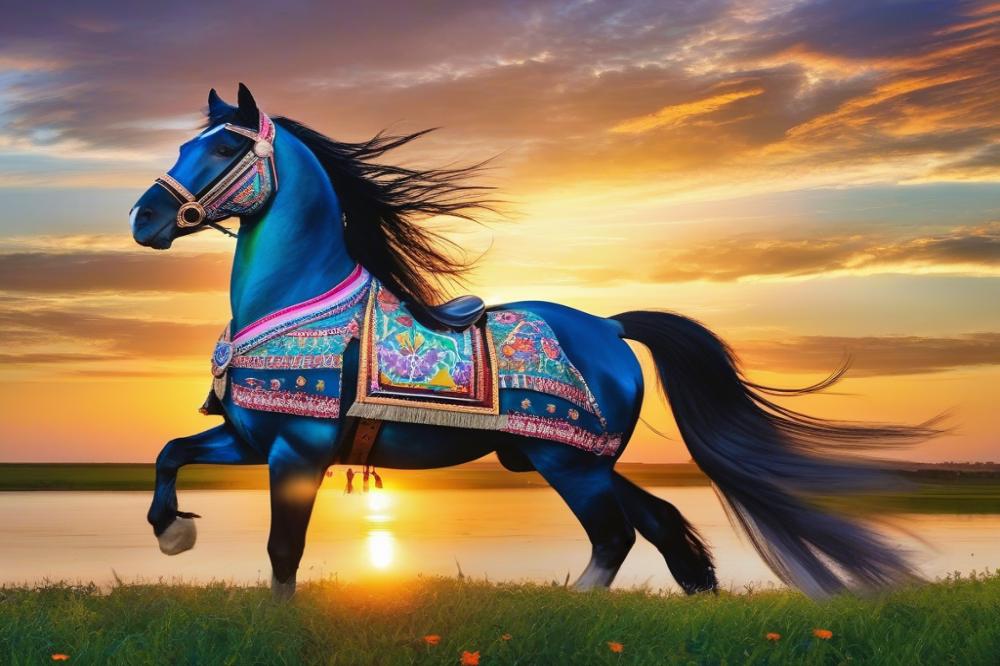The Art of Riding Gypsy Vanners for Recreational Events
Riding is a passion that connects people with magnificent animals. Among these, the majestic Gypsy Vanners stand out. Known for their thick manes and gentle disposition, these horses truly embody the term “gentle giants.” Riders of all skill levels find joy in their calm nature and impressive presence. Their striking appearance and amiable personalities make them ideal companions for those looking to engage in recreational riding.
Engaging with such a large animal requires finesse. Proper riding techniques can make a significant difference during recreational events. They not only promote safety but also enhance the overall experience for both horse and rider. Riders must grasp the mechanisms of balance and communication. Establishing trust between horse and rider becomes crucial in every ride. Whether it’s a casual outing or a fun competition, these elements play a pivotal role.
A solid riding foundation leads to shared enjoyment. Learning how to properly guide and direct these horses is essential for a harmonious partnership. Riders must also consider the horse’s comfort and needs. Understanding a horse’s body language helps foster a positive relationship. With the right techniques and care, riders can enjoy countless adventures on the trail. Mastering the art of riding Gypsy Vanners opens doors to a world of memorable experiences.
Understanding Gypsy Vanners

Physical Characteristics and Temperament
Gypsy Vanners are striking horses, with their long, flowing manes and distinctive feathering on their legs. These horses have a stocky build, providing strength and stability. Typically, they stand between 14.2 and 16 hands tall. Many horse lovers appreciate their gentle eyes and friendly nature. Temperament plays a significant role in their appeal. Most exhibit a calm demeanor, making them suitable for riders of various skill levels. They respond well to training and tend to be eager to please their handlers.
Role in equestrian events
In recreational events, these horses shine. Their natural grace and agility often attract attention. Many riders appreciate their versatility, allowing them to excel in several disciplines. From trail riding to pleasure shows, they adapt easily. Their ability to remain calm under pressure is noteworthy, too. This characteristic helps build confidence in riders, especially those who might be nervous. Gypsy Vanners can make any event more enjoyable, whether it’s a leisurely trail ride or a competitive equestrian show.
Comparative Advantages in recreational riding
Several factors make these horses ideal for recreational activities. First, their calm temperament enhances the riding experience. A nervous beginner feels more at ease on a steady mount. Additionally, these horses have a knack for forming deep connections with their riders. This bond can lead to improved communication and trust. Their strong builds allow them to navigate different terrains effectively. Whether on rugged trails or flat fields, they handle both with grace. Often, these horses are easier to manage than others due to their gentle nature. For families and recreational riders, this means less stress and more fun.
Horse riding techniques for Gypsy Vanners

Riding a Gypsy Vanner offers a special experience for those who wish to engage in recreational events. Understanding their temperament is key to mastering effective techniques. These horses are known for their calm demeanor, making them ideal companions for riders of various skill levels. Patience is essential when working with them; they respond best to gentle guidance rather than abrupt cues.
Balance and posture play a significant role in riding. A relaxed, upright position helps maintain control while allowing the horse to move naturally. Feet should be positioned in the stirrups with the heel down, creating a stable foundation. Information about the horse’s movements is vital. Being aware of shifts in weight can guide a rider toward maintaining equilibrium on the saddle.
Utilizing the horse’s natural gaits enhances the overall riding experience. Gypsy Vanners often exhibit smooth trots and canters, providing comfort for riders. Knowing how to ask for these various movements leads to a more enjoyable ride. When transitioning between gaits, subtle shifts in body weight and gentle rein pressure can facilitate seamless changes.
Additionally, working on breathing techniques can foster a strong connection with the horse. Synchronizing your breath with their pace promotes relaxation for both rider and animal. Engaging in pre-ride exercises helps increase awareness and encourages a focus on the ride ahead. Remember, communication between horse and rider is a two-way street.
Overall, integrating these riding techniques creates a harmonious partnership. Embracing their unique qualities leads to mutual respect and understanding. Enjoy the journey while navigating the path of riding Gypsy Vanners!
Horse Care for Gypsy Vanners

Daily Care Routines and Maintenance
Taking care of a horse requires commitment. Start each day by checking the horse’s stable. Clean the area to keep it hygienic. Grooming is essential. Use a curry comb to loosen dirt and debris. A thorough brushing will keep the coat shiny and healthy. Pay attention to the mane and tail, as they can easily become tangled.
Next, always check the horse’s body for any signs of injury or discomfort. Regularly inspecting the hooves helps prevent problems. Picking out stones and debris avoids injury and keeps them in good shape. After cleaning, consider applying a hoof conditioner. It enhances hoof health and supports overall well-being.
Physical activity is crucial. Make sure your horse gets regular exercise. Riding or lunging for thirty minutes a day keeps them fit. Engaging in varied activities can also prevent boredom. Social interaction with other horses is beneficial, too. Many horses thrive when they have companionship.
Nutritional Needs Specific to Breed Requirements
Proper nutrition is key for maintaining health. Each breed, including the Gypsy Vanners, has unique dietary needs. Provide a balanced diet consisting of quality hay and grain. Pay close attention to protein levels, as these can affect growth and overall condition. Some horses may need supplements. For instance, items rich in omega fatty acids support coat shine and skin health.
Hydration should never be overlooked. Fresh water must always be available. Regularly changing the water encourages drinking. Monitoring food intake can reveal potential issues, so keep an eye on eating habits. If a horse suddenly eats less, it may indicate discomfort.
It’s critical to consult with a veterinarian or equine nutritionist. They can assist in tailoring a diet that suits specific health conditions. A well-fed horse is a happy horse.
Importance of Regular Health Check-Ups and Hoof Care
Routine veterinary visits are essential. Schedule check-ups at least once a year, or more often as needed. These exams often include vaccinations and dental care. Keeping teeth in good shape ensures proper nutrition. Be aware that horses can suffer from dental problems, which can lead to significant health concerns.
Hoof care also plays a vital role in overall health. Regular shoeing is important if the horse is worked on hard surfaces. A qualified farrier should perform this task. Timing is crucial; shoes should usually be changed every six to eight weeks. Additionally, monitor for cracks or other issues between visits.
Working together with professionals can make a difference. Health and hoof care help maintain performance and comfort. With these proactive approaches, you can enjoy many exciting recreational experiences with your horse.
Horse Grooming Practices
Grooming plays an essential role in keeping horses healthy and happy. The coat of the Gypsy Vanner is thick and often layered, requiring specific techniques. Start with a good brushing. Use a curry comb to loosen dirt and debris from the coat. Move in circular motions, working from neck to tail. This helps to stimulate the skin and increase blood flow.
For finishing touches, opt for a soft-bristled brush. It’s perfect for sweeping away any remaining dust and giving the coat a shiny appearance. Don’t forget those feathered legs. A special brush designed for their long hair will keep it tangle-free. Regular grooming helps maintain their beautiful appearance and keeps them comfortable.
Tools and Products for Effective Grooming
Selecting the right tools is vital. Invest in a quality set of brushes. A hoof pick is also essential for maintaining healthy hooves. For sensitive areas, like around the ears, use a gentler touch with a soft cloth. Products such as detanglers or coat conditioners can help manage their long hair. Look for things that are free from harsh chemicals.
These will protect the skin and hair while offering a pleasant scent. Sprays designed for shine can add that extra touch before showing your horse. Carry a grooming bag to keep everything organized. This not only saves time but makes the process feel routine and enjoyable.
Building a Bond Through Grooming Routines
The relationship between owner and horse deepens through consistent grooming. Each session is an opportunity to connect. Speak softly and take your time. This care helps build trust, allowing your horse to feel safe and comfortable around you. Sharing quiet moments while grooming can be comforting for both parties.
Try to develop a routine. Familiarity creates comfort. Horses often thrive on predictability, and they will appreciate the time spent together. Even the simple act of grooming can promote relaxation and emotional wellbeing. Make it a bonding experience, not just a chore.
Each interaction reinforces the bond you share. Focus on being gentle and attentive. Pay attention to their reactions and moods; this can guide your approach. Building this relationship is crucial not just for performance in events but for the overall happiness of the horse.
Training Tips for Riding Gypsy Vanners
Basic Training Methodologies for Beginners
Starting with groundwork is essential. This step builds a foundation. Spend time building a bond before jumping in the saddle. Groundwork allows riders to understand their horse’s body language. Focus on leading, lunging, and simple exercises. These activities help the horse become accustomed to human cues. Use positive reinforcement to encourage good behavior. Simple rewards, like treats or praise, make a significant difference. Riders should also practice mounting and dismounting with patience. This helps the horse feel secure under their weight. Over time, transitions into the saddle will feel less overwhelming.
Advanced Techniques for Experienced Riders
For those who are already comfortable, consider refining your skills. Dressage and jumping can improve your riding ability significantly. Focus on your posture and balance. This leads to better communication with your horse. Advanced maneuvers can deepen your connection. Techniques like lateral movement or flying lead changes are also beneficial. These require confidence from both rider and horse. Consistent practice is key to mastering these skills. Challenge yourself with new exercises to stimulate growth. Always be aware of your horse’s comfort during these sessions.
Establishing Trust and Communication with the Horse
Building trust is fundamental in any horse-rider relationship. Spend quality time together outside of training. Grooming is a great way to foster connection. It creates a calming environment where the horse can relax. Make sure to understand their reactions. Each horse has a different personality. Learning to read those signals shows you care. Slow, deliberate movements during training can help reduce fear. Engage in verbal communication, as gentle words can soothe. Trust takes time, but it is worth the effort. Establishing this bond lays the groundwork for a successful partnership.
Participating in Recreational equestrian events
Types of Events Suitable for Gypsy Vanners
Recreational equestrian events come in different shapes and sizes. From trail rides to dressage competitions, there’s something for everyone. Gypsy Vanners shine in events that showcase their beauty and charm. Their gentle demeanor makes them ideal for family-friendly activities. Speed may not be their strongest suit, but they excel in classes focused on movement and presence. Versatility is key. Consider western pleasure classes or even showmanship. Each event offers a chance to bond with these magnificent horses.
Preparing for and Entering Competitions
Preparation starts long before the day of the event. Begin with a proper grooming routine. A clean horse not only looks good but feels good too. Riders should practice regularly to build confidence. Fitting the horse with the right tack is crucial for comfort. The day of the event requires careful planning. Arrive early to allow ample time for warm-ups. Make sure to check all equipment, including saddles, bridles, and ride gear. An organized approach can make a difference. Don’t forget to review the event rules. Understanding the guidelines will help avoid mistakes during the competition.
Etiquette and Expectations During Events
Understanding proper etiquette is essential for everyone involved. Be respectful to other participants and volunteers. A friendly greeting can set a positive tone for the day. When competing, wait for your turn patiently. Always follow directions from event staff. Maintaining a calm demeanor helps create a welcoming atmosphere. If you have questions, feel free to ask for clarification. Remember, smiling and encouraging fellow riders goes a long way. Finally, showing appreciation to judges and organizers reflects well on you and your team. This spirit of camaraderie enriches the experience for everyone.
Riding Safety Considerations
Essential safety gear for riders
Wearing the right safety gear is vital for anyone riding a horse. Start with a helmet designed for equestrian activities. This protects your head in case of a fall. Boots with a defined heel are also important. They help keep your feet secure in the stirrups. Long pants can prevent chafing and protect your skin. High-visibility vests are useful when riding in public areas. They help other people see you easily. Always check your gear for wear and tear before each ride. If something doesn’t feel right, replace it before hitting the trail.
Understanding horse behavior and ways to ensure rider safety
Gaining insight into a horse’s behavior is crucial for safety. Horses can react unexpectedly to their surroundings. Familiarize yourself with the signs of stress or anxiety in a horse. If a horse is stamping its feet or twitching its tail, it may be upset. Approach any horse with caution and allow it to see you. Establishing trust can lead to a safer ride. Speak softly and move deliberately around horses. They can sense fear and might react to nervous energy. Learning to read a horse’s body language can help prevent accidents.
Best practices for riding in groups and public areas
Riding with others can be enjoyable but comes with responsibilities. Maintain a safe distance from other riders to avoid collisions. Communicate clearly with your group about where you are going. Establish a plan beforehand, especially in busy areas. When passing pedestrians or cyclists, always announce your presence. A simple “hello” or “behind you” can go a long way. Stay aware of your surroundings and what is happening around you. If a horse becomes agitated, guide it away from distractions calmly. Always prioritize the safety of your group and the public.
Final Thoughts on Riding and Enjoying Equestrian Events
Recapping the techniques and practices for riding these remarkable creatures is essential. Riders should always focus on building a strong bond with their horse. Effective communication between rider and horse enhances trust. Using gentle cues can lead to improved responsiveness. Practicing regular horse care plays a critical role in maintaining their physical and mental well-being. Regular exercise and proper nutrition contribute significantly to their performance.
Outdoor activities offer a great way to experience the natural beauty of the world. Riders of all ages can find joy in exploring trails, participating in group rides, or simply enjoying a leisurely stroll in a park. Engaging in these fun adventures fosters a sense of connection. Being outdoors allows you to appreciate the company of your gentle giant even more. Each ride becomes an opportunity for new memories and shared experiences.
Participating in recreational events brings delight to both horse and rider. These occasions can help build confidence and develop skills in a supportive environment. From trail challenges to local shows, equestrian events provide a platform for everyone to shine. They allow riders to showcase their hard work while enjoying the camaraderie of fellow enthusiasts. In these shared experiences, the joy of riding truly comes alive, revealing the deep bond formed between humans and horses.



